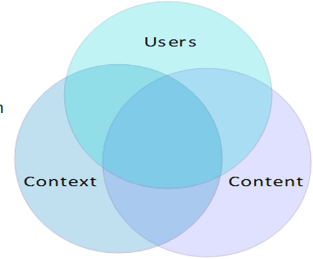A finely tuned marketing strategy does not happen by accident. Creating one requires a solid underpinning in data analytics combined with an informed and expert interpretation of data. Armed with Information Architecture (IA) that is compiled through this methodology, a marketing strategist can then creating a robust and effective content strategy that drives customer engagement and success.
IA helps users understand where they are, what information they have found, the context of what they have found, and what to expect from a site.
How is Information Architecture developed?
IA is rarely managed as a specific function by an individual with a related job title. Rather, IA is more of a precept that defines how information is presented and how people relate to that information. The User Interface (UI) is informed by IA. Both in turn shape the overall User Experience (UX) for a site.
IA is organized through spreadsheets and diagrams that are referred to as comprehensive layouts or comps. IA enables content to be organized in terms of hierarchy, along with the relationship between different content elements found in a site.
Using business intelligence and data to understand users
The key to business success is understanding users, content and context. These elements inform marketing strategy and drive customer engagement and revenue. Intelligence gathered from raw data improves IA and helps customers find information and make decisions. Users, content and context are not independent, but are linked in the form of a Venn diagram.

IA teases out the commonality among these three elements to streamline business decisions.
The premise of Information Architecture is captured by four essential systems:
- Organization
When dealing with a large volume of data, organization allows for parsing data based on how information is categorized and structured. It is very difficult or impossible to analyze data that is not properly organized.
- Labelling
Labeling is an extension of organization that determines how information is presented to users. It is important to assess the objective for labelling since certain labels can connote a bias in the way that users react to information. While in some cases this may be desirable, in other cases a neutral labelling system is preferrable.
- Navigation
In many ways, the user experience is defined by how easy it is to browse and move from one piece of information to the next. This can be accomplished by checking a “next” box or going to tabs at the top of a page, among other ways.
- Search
Search systems determine how users search for information—for example, by entering words in a text box.
In order to get the most out of your marketing strategy, it is vital to deploy Information Architecture to your best advantage. Pintaya is a digital marketing firm that specializes in turning data analytics into actionable business development strategies. Please contact us to learn how we can create a sound IA plan for your business.

